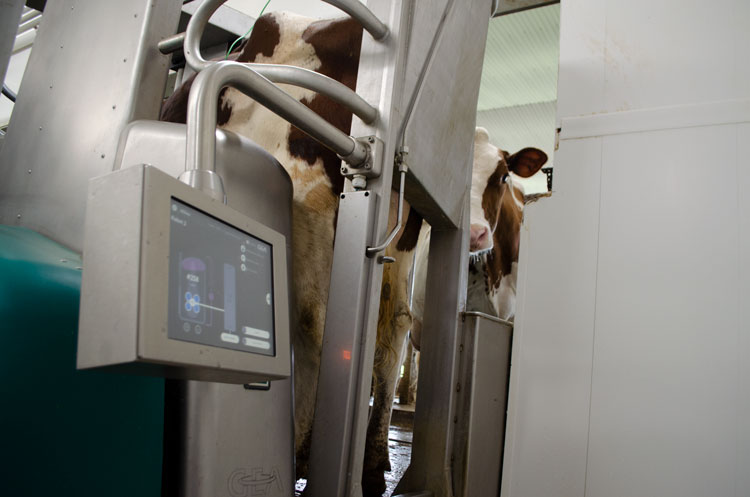
It can be difficult to let a building sit idle that has plenty of useful life yet. For farms looking to make the switch to robotic milking, a barn retrofit might be possible, but a few questions must first be asked.
Joe Zulovich, an agricultural engineer with University of Missouri Extension, talked about building design and retrofit opportunities for robotic milking during the Dairy Practices Council’s Automated Milking Systems Virtual Workshop.
First, he covered the basics of quality cattle housing: resting space, room to eat and drink, ventilation, cow cooling, and animal handling capabilities. He said that housing is critical to the success of an automated milking system.
“You need everything else correct on your production system,” he said. “The robot is simply harvesting the milk.”
He said that some barns can be remodeled to incorporate robotic milking, and he showed examples of freestall barns and even a tie stall barn that is now used for an automated milking system. The challenge, he said, is evaluating how well your system is currently working.
He posed the question, “Does your existing lactation cow housing system provide what is necessary for excellent cow comfort and good cow hygiene for high production and quality milk?”
If yes, he said a retrofit is a viable option to consider. If not, a new building might be the better bet. “The big issue is that you want to make sure you can provide cow comfort and cow hygiene in the system.”
To evaluate a barn’s ability to be retrofit, he said to determine if it has the characteristics of quality freestall housing that can be maintained in an automated housing system. “One thing that is true in automated milking systems is that cows are always in the freestall barn,” Zulovich said. “You have to figure out when you are going to do barn and stall maintenance.”
Also, he said to make sure the desired cow flow can be established for milking, breeding, and animal health. In addition, ensure that all cow management aspects can be completed as desired.
Finally, he said that a retrofit may be worth the investment if you can get the remodeling done for less than 75% to 80% of the cows of building a completely new facility.
Zulovich reminded that quality housing is beneficial to cows, in whatever way they are milked.
“Upgrading a housing system that increases cow comfort and hygiene typically pays considerable dividends regardless of milking system,” he said. “Providing good cow comfort is the key.”








